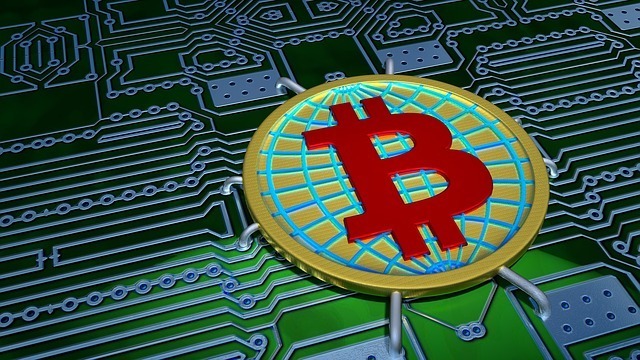Top 4 Things You To Understand About Bitcoin Taproot Update for Native NFTs
Bitcoin now has digital artefacts, which breaks Ethereum and Solana’s near-monopoly on NFTs. But many people have said they don’t like the technology based on the Ordinal protocol created by Casey Rodarmor. The reason is good. Bitcoin taproot upgrade feature lets native NFT content be stored and tracked on the BTC blockchain, but as “Bitcoin is Saving,” an industry observer points out, “just because you can, doesn’t mean you should.”
Indeed. With its proof-of-stake model, Ethereum is much better able to support the NFT industry and help artists who are exploring the next frontier of the new cultural economy.
The Proof of Work (PoW) protocol used for Bitcoin transactions uses 99.95% more energy than the Proof of Stake (PoS) protocol used by Ethereum. By lowering the amount of electricity needed to confirm a transaction, Ethereum cut off the support Proof-of-Work (PoW) blockchain platforms give to fossil fuel power plants used by Bitcoin miners, which harms the environment. Now, NFT artists have a clear option for technology that doesn’t hurt the environment.
For example, the virtual reality artist Sutu uses the tools that allow creativity to grow with changing technology while also caring about global equity and the environment.
By supporting the conscious crypto creator movement, Sutu shows how financially and socially viable transparent and sustainable NFT practices can be. His limited-edition Neonz collection of 10,000 retro-futuristic avatars on Tezos sold for around a million dollars. This helped spread the word about clean NFT practices and show the arts community new ways to use technology to help the environment.
Now live. I have four works available as part of my ‘Post Humanity Arcade’ collection. Three limited editions and the large canvas is a 1/1. Enjoy! https://t.co/NWh3wchBpk https://t.co/4T4AVEQw2Q
— ⚡️𝖘𝖚𝖙𝖚 ⚡️ (@sutu_eats_flies) February 27, 2023
Bitcoin Ordinals give serial numbers to satoshis, the smallest unit of currency in Bitcoin. This makes each one unique and unchangeable. Then, people can put digital content on a satoshi, like a picture, a scanned document, a video clip, etc. Using the Taproot and Segregated Witness features of the cryptocurrency, these inscriptions can be as big as 4 megabytes, which is more than enough space for these media.
Also, read – Your Ultimate Guide To Bitcoin Ordinals And NFTs
Most of the problems come from there.
Bitcoin taproot upgrade was created to help with financial transactions, and it has done a good job of that. But putting a lot of bulky NFTs on the BTC blockchain causes several serious problems:
Edward Snowden on cryptocurrency privacy:
-“Taproot does not fix bitcoin’s privacy problem.”
-“Zcash really does the best in the space with their shielded transactions.”
-“they [Monero] are just playing a shell game. Those shell games don’t last forever.” pic.twitter.com/2SVVbSIkUy— John Paul Koning (@jp_koning) May 12, 2021
- It threatens to lock up “small blockers” who rely on the chain’s small size to make small profits and revenue.
Most of the time, these players are part of small businesses in poor areas. They can’t hope to compete with syndicates and Bitcoin pools to mine the bigger blocks. “People who are poor and living in developing countries will have to pay more to run their Bitcoin nodes and send transactions,” Bitcoin is Saving said. For example, Luxor mined a 3.96 MB block a few days after Ordinal inscriptions came out. Even though thousands of financial transactions can cause many blocks to grow to that size, this one only had 63 blocks because one digital image is 3.94 MB.
- It destroys the original idea behind Bitcoin.
If NFT projects, which are often just for fun, take off on the Bitcoin blockchain, they could use up valuable bandwidth and slow down the whole process. NFT inscriptions are like farm tractors on a highway. They move slowly and take up more than one lane. Smaller financial transactions, which the chain was made for, get stuck in the line because they can’t get around the slow traffic in front of them. They have to wait until the tractor gets to where it needs to go and pulls off the road. As the Luxor example shows, a single block could handle more than 10,000 financial transactions or one NFT.
- It can make prices go up.
Because Ordinal inscriptions are done, stored, and processed on Bitcoin’s main network, the increased traffic will make it harder for miners to record data quickly. Keeping these assets on-chain is a low-return use of resources that will raise fees and transaction costs. And because NFT inscriptions pay out more, miners are likely to choose them over recording or financial transactions. Merchants, investors, and other stakeholders will have to match the higher NFT fees or be left behind.
- It lets spam, bloatware, malicious data, and “artefacts” that aren’t good for society in any way in.
Rodarmor has already had to admit that this is a problem and rush to get rid of a very pornographic message from the front page of Ordinal’s website. The offensive satoshi, which was on the site for about 30 minutes, has been taken down, but the image can never be erased.
Adding NFTs to Bitcoin makes scaling the blockchain and making it easier to use even harder than it already is. Large NFT nodes will take up all the available space and push out small miners and nodes from the most profitable workflows, which will hurt legitimate financial transactions.
The practice of writing on Bitcoins also calls into question its ability to be used for anything and to be anonymous. If a few satoshis have NFTs whose values change, they are different from the rest. If some of the many satoshis were unique, it would be easy to track them down. This would remove privacy protection, one of the blockchain’s best features.
Stay informed with daily updates from Blockchain Magazine on Google News. Click here to follow us and mark as favorite: [Blockchain Magazine on Google News].
Get Blockchain Insights In Inbox
Stay ahead of the curve with expert analysis and market updates.
latest from tech
Disclaimer: Any post shared by a third-party agency are sponsored and Blockchain Magazine has no views on any such posts. The views and opinions expressed in this post are those of the clients and do not necessarily reflect the official policy or position of Blockchain Magazine. The information provided in this post is for informational purposes only and should not be considered as financial, investment, or professional advice. Blockchain Magazine does not endorse or promote any specific products, services, or companies mentioned in this posts. Readers are encouraged to conduct their own research and consult with a qualified professional before making any financial decisions. The featured image used is just a creative depiction of the title and it does not intend to hurt sentiments of any person or institution. If it hurts anyone sentiments, please do not hesitate to reach out to Blockchain Magazine.

 Bitcoin
Bitcoin  Ethereum
Ethereum  XRP
XRP  Tether
Tether  Solana
Solana  Dogecoin
Dogecoin  USDC
USDC  Cardano
Cardano  Lido Staked Ether
Lido Staked Ether  TRON
TRON  Chainlink
Chainlink  Avalanche
Avalanche  Wrapped stETH
Wrapped stETH  Wrapped Bitcoin
Wrapped Bitcoin  Sui
Sui  Toncoin
Toncoin  Stellar
Stellar  Hedera
Hedera  Shiba Inu
Shiba Inu  WETH
WETH  Polkadot
Polkadot  LEO Token
LEO Token  Litecoin
Litecoin  Bitcoin Cash
Bitcoin Cash  Bitget Token
Bitget Token  Hyperliquid
Hyperliquid  Uniswap
Uniswap  Official Trump
Official Trump  USDS
USDS  Wrapped eETH
Wrapped eETH  Pepe
Pepe  NEAR Protocol
NEAR Protocol  Ethena USDe
Ethena USDe  Aave
Aave  Aptos
Aptos  Internet Computer
Internet Computer  Monero
Monero  WhiteBIT Coin
WhiteBIT Coin  Ondo
Ondo  Ethereum Classic
Ethereum Classic  Cronos
Cronos  Mantle
Mantle  POL (ex-MATIC)
POL (ex-MATIC)  Render
Render  Dai
Dai  MANTRA
MANTRA  Algorand
Algorand 




